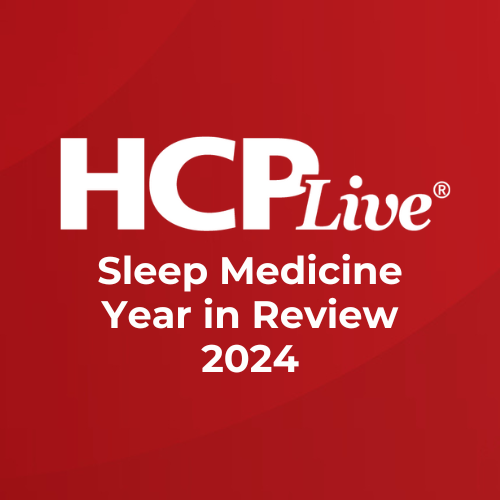Article
Lemborexant Improves Sleep Maintenance for Patients With Sleep Apnea
Author(s):
Lemborexant was statistically similar to placebo on both day 1 and day 8 for any group in latency to persistent sleep, but superior in sleep efficiency and wake after sleep onset.
Margaret Moline, PhD
Credit: Linkedin

Lemborexant was superior to placebo in 2 out of the 3 sleep variables in a pair of studies of patients with mild, moderate, or severe obstructive sleep apnea (OSA).1
A team, led by Margaret Moline, PhD, Eisai, analyzed different sleep variables in a pair of studies evaluating Lemborexant as a treatment for patients with OSA in data presented during the SLEEP 2023 Annual Meeting in Indianapolis.
Geriatric Patients
Hypnotics could worsen respiratory function of patients, particularly for geriatric patients.
Lemborexant, a dual-orexin-receptor-antagonist, is currently approved by the US Food and Drug Administration (FDA) for the treatment of patients with insomnia.
In a pair of studies, investigators found Lemborexant is safe from a respiratory standpoint for patients with mild, moderate, or severe OSA who did not report insomnia.
The Studies
Both studies were double-blind, placebo-controlled, crossover studies involving adult patients with untreated mild (apnea-hypopnea-index [AHI] ≥5 to < 15) (n = 39), moderate (AHI≥15 to < 30) (n = 13), or severe (AHI≥30) OSA (n = 20), without insomnia.
Each participant was randomized to 2 8-night periods separated by at least 14 days to be treated with Lemborexant 10 mg or placebo.
The investigators assessed latency to persistent sleep, sleep efficiency, and wake after sleep onset using polysomnography on day 1 and day 8.
The results show Lemborexant was statistically similar to placebo on both day 1 and day 8 for any group in latency to persistent sleep.
However, sleep efficiency was significantly greater on day 1 in patients with mild (LEM10, 90.43; placebo, 80.31; P <0.0001), moderate (LEM10, 88.83; placebo, 84.02; P = 0.016), and severe (LEM10, 87.76; placebo, 77.84; P <0.0001) OSA.
On day 8, sleep efficiency was significantly greater in patients with mild (LEM10, 86.65; placebo, 80.59; P = 0.003) and moderate (LEM10, 88.45; placebo, 80.70; P = 0.004) OSA. This trended toward significance in patients with severe OSA (LEM10, 85.60; PBO, 80.63; P = 0.055).
Wake after sleep onset was also significantly lower in patients with mild (LEM10, 33.30; PBO, 76.76; P <0.0001), moderate (LEM10, 44.26; PBO, 64.71; P = 0.008), and severe (LEM10, 42.03; placebo, 91.49; P <0.0001) OSA on day 1.
Then on day 8, wake after sleep onset was significantly lower in participants with mild (LEM10, 51.74; placebo, 70.52; P = 0.015) and moderate (LEM10, 49.16; placebo, 75.15; P = 0.008) OSA. However, this was not true for patients with severe OSA (LEM10, 59.85; placebo, 74.46; P = 0.161).
Overall, Lemborexant was well-tolerated.
“In untreated OSA subjects without insomnia, irrespective of OSA severity, LEM improved sleep maintenance versus placebo. LPS did not differ between treatments since such patients may not report sleep onset difficulties,” the authors wrote. “These findings support the use of LEM for patients with comorbid insomnia and sleep apnea (COMISA).”
References:
Margaret Moline and others, 0364 The Effect of Lemborexant on Polysomnographic Sleep Parameters in Adults with Mild, Moderate, or Severe Obstructive Sleep Apnea, Sleep, Volume 46, Issue Supplement_1, May 2023, Pages A161–A162, https://doi.org/10.1093/sleep/zsad077.0364




